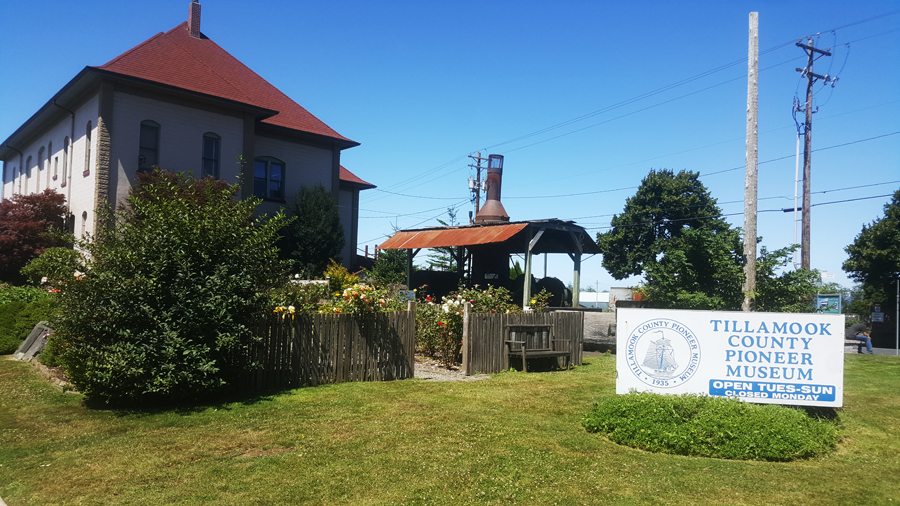Like a beacon as you enter into the area on Highway Six, this Tillamook Coast landmark fails to disappoint the local and visitor alike. Right in the middle of downtown Tillamook is an iconic building of the area’s history: The Tillamook County Pioneer Museum.
Originally operated by some of Tillamook County’s pioneering families, the Museum has been a centerpiece for the Tillamook Coast since 1935. In 1945, the Museum was handed over to the Tillamook County local government and subsequently ran for 40 years.
Then in 1985 the county, pressured with fiscal cutbacks and budgetary concerns, decided to pull their consistent funding and left the museum in murky waters. Despite the budget cuts, the people of Tillamook rallied and created a tax levy that kept the funds flowing to this one-of-a-kind icon that houses exhibits, artifacts, photos and myriad stories that help piece together the first and current days of the Tillamook Coast.
After the tax levy was passed the pioneering families created a 501(c)3 Non-Profit organization labeled the Tillamook Pioneer Museum Foundation which has overseen the management and growth until present day.
There are items to view from multiple eras including: native tribal artifacts, logging items, information regarding the memorable “Tillamook Burn,” old original model-T Ford cars, wagons, and collections of area rocks and gemstones. The museum also features an entire room of exotic animal taxidermy as well as a top-notch diorama featuring the animals as they may be in their environs.
Stroll into the war history section and see old photos, uniforms, weaponry and other world war artifacts that were donated by local veterans. Visitors can learn about the Tillamook Naval Air Station and the naval blimps that dotted the skies above the Tillamook Coast. Exhibits featuring Third Reich and Japanese weapons, flags and medals, as well as some sections pertaining to the Korean War and a few examples of post civil war era artifacts can also be found.
Want to see the home of Tillamook’s first colonial settler? Visitors can view a mockup of Joseph Champion’s home that was constructed inside a giant cedar stump.
The Tillamook Coast’s logging days are featured in a fantastic walk-through area in the basement complete with replicas and cedar-shingled structures to show off old chainsaws, choke-sets, oxen harnesses and rail pieces that all were used in the 1900s timber-boom.
An area is also devoted to the past and present Sheriff’s office showing old western style photos of some of the first lawmen in Tillamook County. There are
even old-fashioned cheese-making exhibits featuring the history of the area.
More than just a singular edifice, the Museum has a number of outdoor exhibits including: the Pioneer Rosarian Rose Garden, an authentic steam-donkey from the area’s logging history, as well as some cross sections of Sitka Spruce that used to dot the area when colonial settlers first arrived.
In addition to the Museum, there is also a brand new satellite location in the form of a 200-acre natural area called Kilchis Point Reserve located about five miles north of downtown Tillamook in Bay City. Together they make up two of the finest examples of local history that can be found outside of the pages of historical texts that pertain to early Tillamook.
Visiting the Tillamook Coast in December? Don’t miss the Museum’s annual Festival of Trees Gala Event. The Festival is the only fundraiser the Museum holds for itself each year. Tickets generally go on sale mid-November. Be sure to follow the Tillamook Pioneer Museum on Facebook for dates and ticket sales.
The main museum is located at 2106 2nd St, in downtown Tillamook and the brand new interpretive trail system at Kilchis Point Reserve is on Spruce St. in Bay City just five miles north on Highway 101.
Next time you travel the Tillamook Coast and want to know more, be sure to allot some time to learn the varied and interesting history behind the gorgeous scenery and quaint communities that make it an ideal place to visit.
